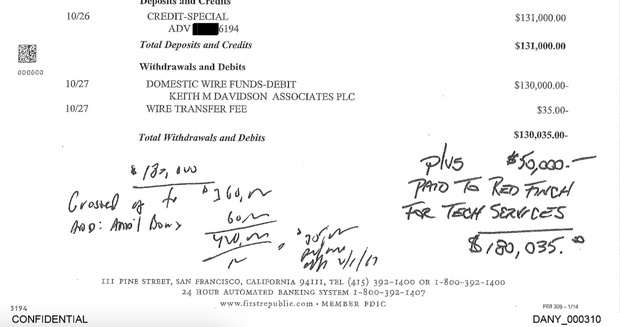Your post honestly brought to mind something one of my digital forensics instructors told our class about a suspect who was being charged with possession of child pornography. The suspect claimed that he inadvertently downloaded the image of the child porn. Okay, just like your hypothetical accountant's oversight, yeah that perhaps could happen. But you really expect people to believe you when it happened repeatedly, multiple downloads on multiple days? That's not inadvertent.
Likewise with Trump, had he been convicted of a single count of falsifying business records, yeah I would concede that's it's plausible that it could be an accounting mistake although because it's Trump he wouldn't be getting the benefit of the doubt from me because I am familiar with how much he lies. But here he was convicted of 34 counts of falsifying business records.
So are you claiming that the accountant made the exact same mistake 34 times? Is that your hypothesis?
There were not 34 separate "crimes" an accountant took invoices and processed them all the same...looking at this, any accountant would think this is Legal expense. Cohen was reimbursed also for a bonus, taxes and other work, all in the same payments looks like legal expense to me.
Would have been great if the Judge had allowed an actual expert on Campaign Finance Law testify on this, but the judge refused because he wanted only his own opinion on campaign finance law presented to the jury...as to not "confuse" them.
Yet the Judge had no problem with letting Stormy Daniels go on and on about completely unrelated things, inteneded to influence the Jury, without stopping her.
"POLITICS
What was Trump convicted of? Details on the 34 counts and his guilty verdict
By
Stefan Becket
Updated on: May 31, 2024 / 3:31 PM EDT / CBS News
Former President
Donald Trump's conviction in New York stemmed from a
$130,000 "hush money" payment his attorney Michael Cohen made to adult film star Stormy Daniels in the days before the 2016 election. Prosecutors said the deal was meant to keep voters in the dark about Daniels' allegation that she had sex with Trump years earlier, which he denies.
But the actual charges that Trump faced were far less salacious, and dealt with the comparatively mundane paperwork that was generated when he reimbursed Cohen for the payment.
Here's what to know about the charges Trump faced:
What was Trump convicted of?
Trump was charged with 34 counts of falsification of business records in the first degree, which is a felony in New York. He pleaded not guilty when he was arraigned last year.
In 2017, Cohen and Allen Weisselberg, an executive at the Trump Organization, reached an agreement about
how Cohen would be repaid for the $130,000 that he sent to Daniels in exchange for her silence. Weisselberg detailed the calculations in
handwritten notes that were shown to the jury at trial.
Cohen would receive $130,000 for the Daniels payment, plus $50,000 intended for a technology company that did unrelated work for Trump. That amount was doubled to account for taxes that Cohen would have to pay on the income. Weisselberg then tacked on an extra $60,000 as a bonus for Cohen, who was upset that his regular year-end award had been cut. The total worked out to $420,000.
Handwritten notes from Allen Weisselberg showing the math behind payments to Michael Cohen, as shown at former President Donald Trump's trial in New York on Monday, May 13, 2024.MANHATTAN DISTRICT ATTORNEY'S OFFICE
Cohen would be paid in a series of monthly payments of $35,000 over the course of 2017. The first check was for $70,000, covering two months. Cohen sent an invoice to the Trump Organization for each check, portraying the payment as his "retainer." Every time he was paid, a bookkeeper generated a record for the company's files, known as a voucher, with the description "legal expense." The first three payments were made from Trump's trust, while the remaining nine came from his personal account.
Each of the 34 charges against Trump corresponded to a check, invoice and voucher generated to reimburse Cohen. The prosecution laid out the charges in a chart that jurors saw several times during the trial:
